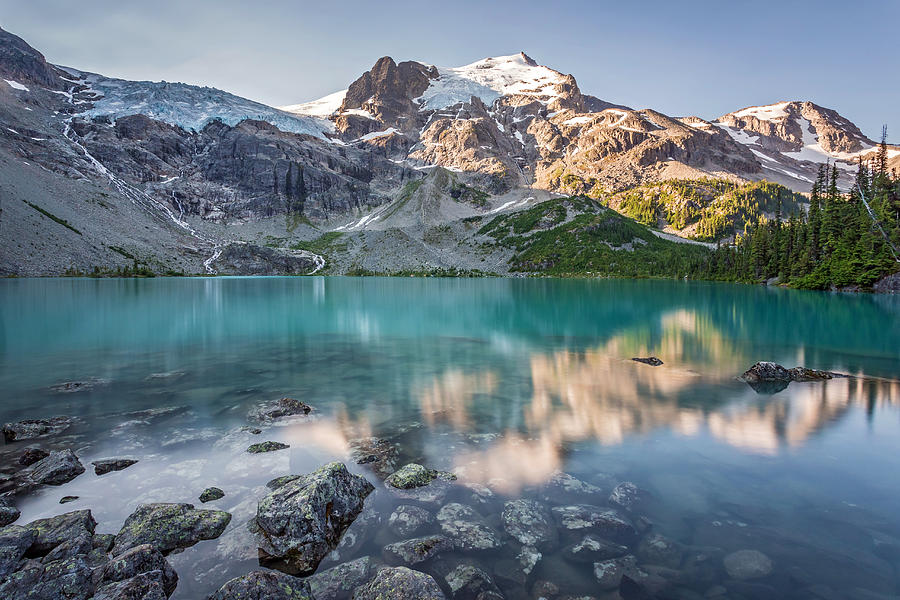
Consequently, the transport of solutes suitable for chemical reactions is then feasible to deeper zones of the aquifer. Modelling isotope changes allowed inferring the temporal pattern of saline water recharge, coinciding with the summer season when water loss through evaporation is most significant. Nevertheless, groundwater chemistry at different depths beneath the lake remains almost constant over time, suggesting an equilibrium between DDF and regional groundwater flow (RGF). The DDF towards the underlying aquifer showed a strong influence on the mixing processes between the groundwater and surface water. δ18OH2O − 14.3‰, R2 = 0.95) consistent with dominant evaporation processes in the lake.The isotopic composition of 190 groundwater and surface water samples collected between September 2008 and July 2015 provides a regression line (δ2HH2O = 5.0

In order to test the conceptual model, a simple numerical experiment was performed using a one-dimensional column that represents the relationship between the lake and the aquifer incorporating the variable density coupling control in solute migration. A combination of hydrochemical (chloride concentration) and stable isotope (δ18OH2O and δ2HH2O) data were used. The goal of this study was to evaluate the interaction between groundwater and saline water from Pétrola Lake to improve our knowledge of groundwater recharge processes by density-driven flow (DDF) in terminal lakes. In that sense, Pétrola Lake (SE Spain) is a terminal lake located in an endorheic basin with elevated anthropic pressure, mainly derived from agricultural inputs and wastewater discharge.

As the salinity of these lakes increases, their mass balance changes, and biogeochemical processes may be intensified. Saline lakes are mostly located in endorheic basins in arid and semi-arid regions, where the excess of evaporation over precipitation promotes the accumulation of salts on the surface. The effective application of conservation policies by managers will depend on the degree of knowledge of these systems. This work highlights the need of integrating a wide range of techniques from different disciplines such as limnology, hydrogeology, geochemistry or microbial ecology for such studies. nitrate) is a step forward in preserving the good ecological status of these ecosystems. The study of how saline lakes can attenuate N pollutants (e.g. While the former is the most important one for microbial turnover, the latter plays also a key role in pollution attenuation based on solute transport by density-driven flows. Two main interfaces are present in saline lakes: (1) the sediment-water interface (2) the freshwater-saltwater interface.

Here, the importance of pollution in saline lakes was assessed, placing special emphasis on N pollution and its attenuation in aquatic interfaces. The excessive anthropogenic loading of nutrients, especially nitrogen (N), can result in eutrophication of these ecosystems. Saline lakes are polluted mainly through inputs of agricultural wastewater along with organic and inorganic wastes from domestic and industrial sources. These lakes are mostly located in arid and semi-arid regions located in endorheic basins, which combined with the low precipitation and high evaporation rates typical for these regions, may lead to the accumulation of pollutants. Saline lakes are subject to numerous environmental impacts closely related to human activities, including mining, desiccation and pollution. TDEM sounding is fast and simple technique to monitor seasonal variations in fresh-brackish groundwater interphase and to detect possible salinization of consumption wells and environmental changes. Annual record of EC in a piezometer confirms the summer ascendant of the brine contained in the lake aquitard. This increases groundwater salinity close to the terrain surface favoring precipitation of halite efflorescences. During the summer, fresh-brackish groundwater interphase rises due to evaporative pumping occurring in the lowlands. The resistivity boundary between the local fresh (10–35 Ohm/m) and regional brackish groundwater (2–5 Ohm/m) is well marked at 600 m above sea level (masl) below the hills, and at 650 masl below the lowlands surrounding the lakes. Simultaneously to the TDEM surveys, electric conductivity of lake water and groundwater was measured. Five TDEM soundings were acquired at the same location for each survey, forming a profile from the hills to the lake-shore.

Two TDEM surveys (summer 2019 and winter 2020) were carried out. In the vicinity of Villafáfila lakes, local fresh and brackish regional groundwaters feeds the lakes, forming a brine in the lake sediments aquitard. Interaction between groundwaters with different salinities and lakes show seasonal variations driven by changes in precipitation and evapotranspiration.


 0 kommentar(er)
0 kommentar(er)
